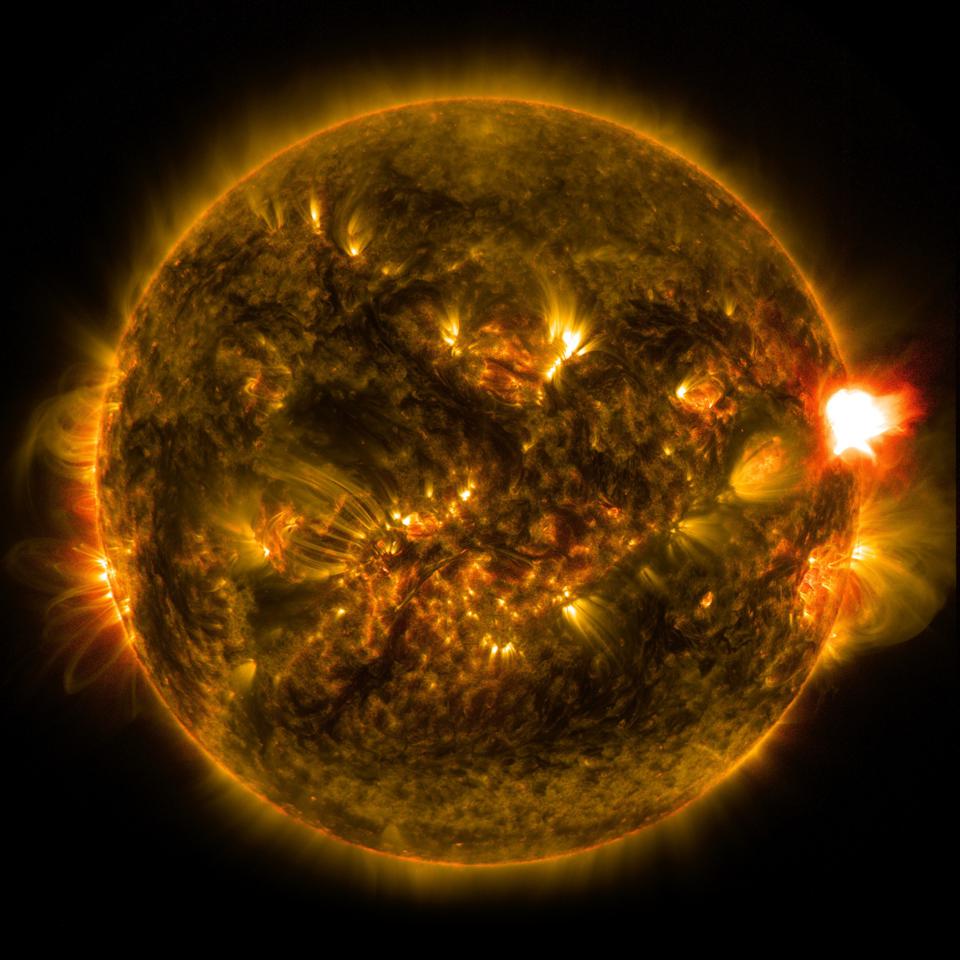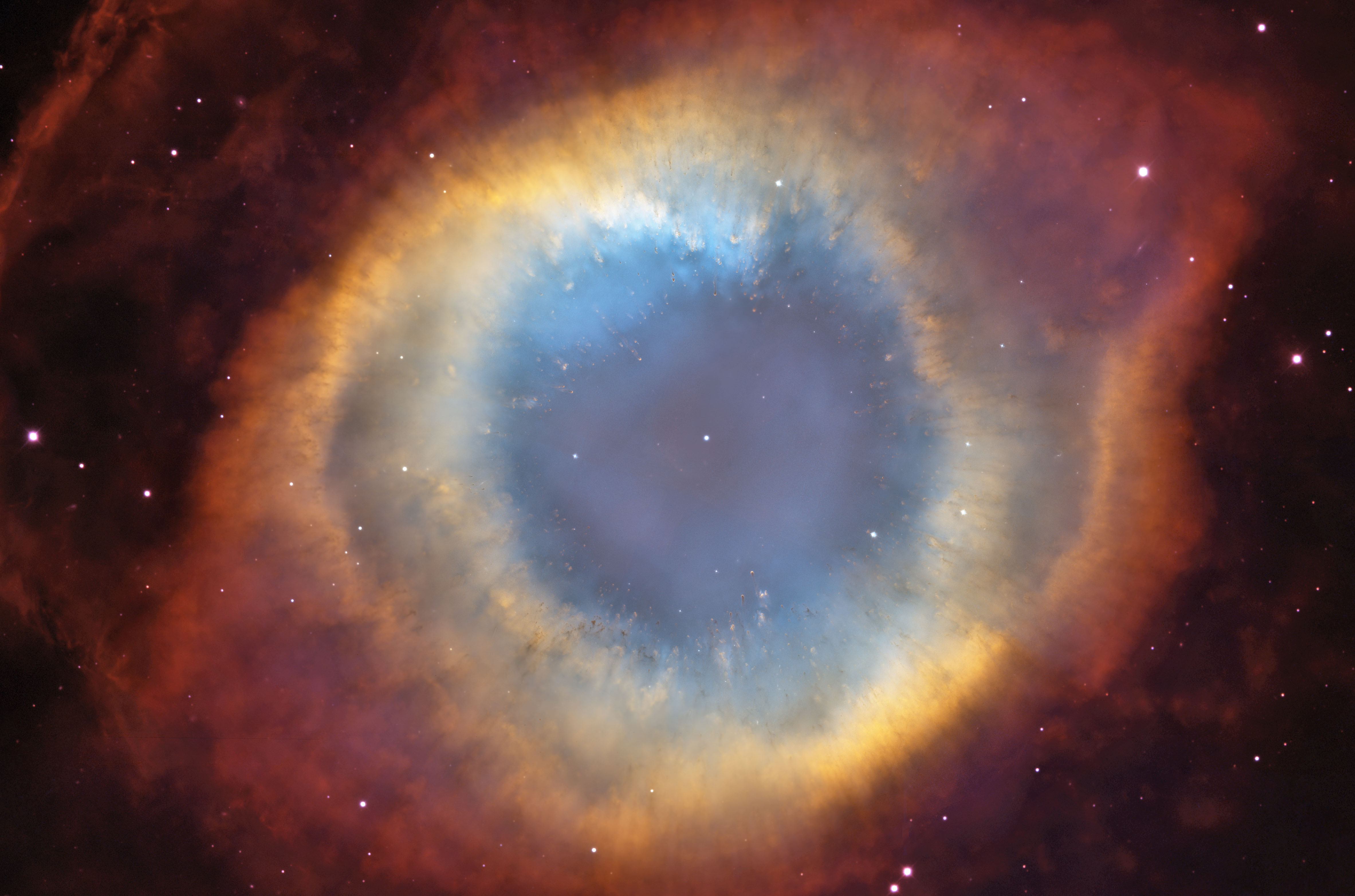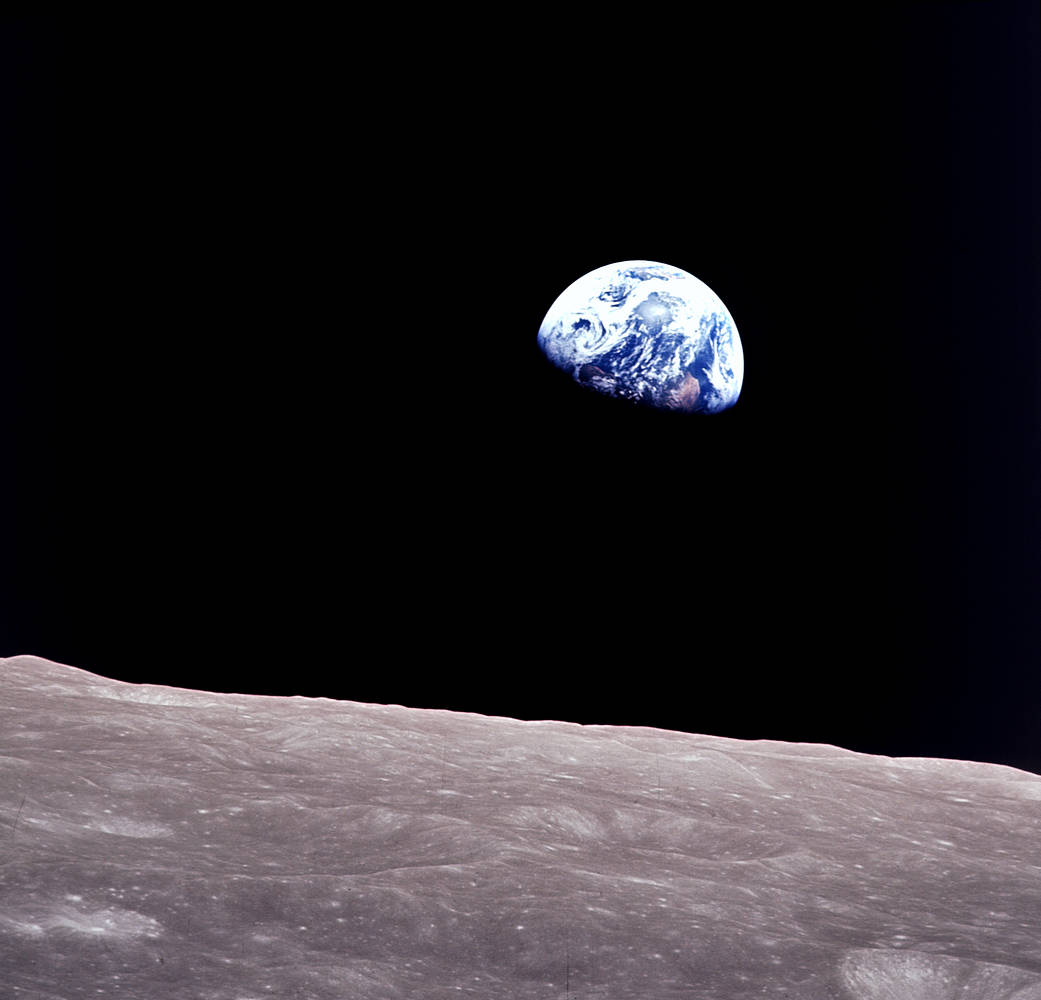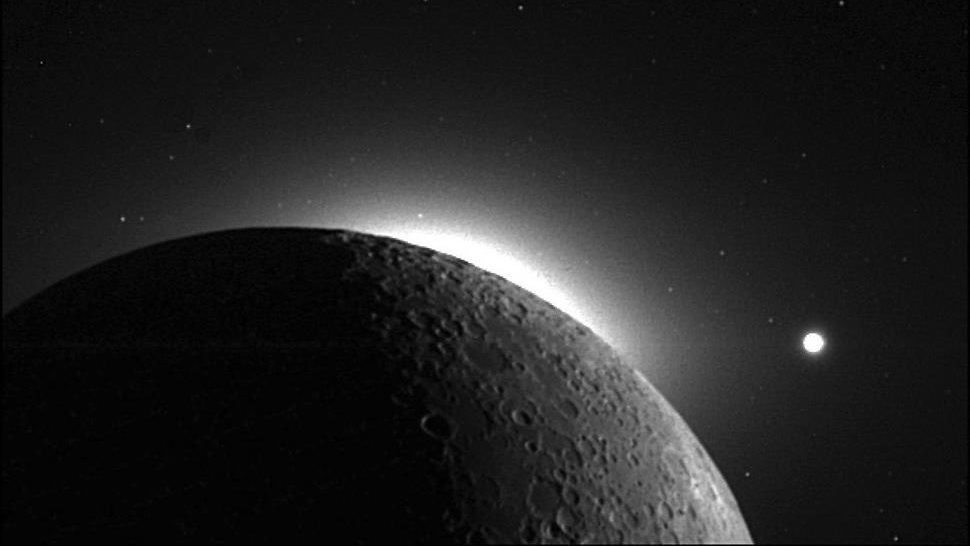Ask Ethan: How vulnerable is Earth to a solar flare?

- In 1859, the most powerful geomagnetic storm ever recorded occurred on Earth: triggered by a powerful solar flare that occurred ~17 hours prior.
- Although no biological creatures were directly harmed, all sorts of electrified devices, including power lines and telegraph wires, experienced surges and caught fire.
- A similar flare, today, would be a multi-trillion dollar disaster, and could lead to millions of deaths due to lack of heat, power, and food/water. But that’s not even the worst-case scenario.
When we think of ways that the Universe can wreak havoc on Earth, we tend to think of some of the more direct catastrophes that can happen — and have happened — in our planet’s past. Asteroid and comet strikes have caused devastation and mass extinctions, and we can be certain that more are on their way. Nearby stellar cataclysms, like supernovae and tidal disruption events, could potentially irradiate or even sterilize our planet. And roving black holes remain an existential danger, as one could devour our planet without warning.
But the Sun, as steady and slowly-evolving as it is, might have an unwelcome surprise in store for us: in the form of a solar flare or a coronal mass ejection. How at-risk are we? That’s what Seth Goldin wants to know, as he asks:
“How concerned should I be for another Carrington-magnitude event?”
On a daily basis, there are worse things to worry about. But over the coming years and decades, not only is a direct hit from a catastrophic space weather event inevitable, but a Carrington-like event isn’t even the worst case scenario. Here’s what everyone should know.

Back in 1859, solar astronomy was a very simplistic science. Other than either creating a projection of the Sun or looking at it through a darkened filter placed over the outer lens of a telescope — allowing us to view, count, and track sunspots, something we’d been doing since the time of Galileo — very little was known about the Sun. We knew it was our planet’s primary source of energy, but we had no idea about the nuclear fusion processes that powered it, nor did we understand the interplay between its interior and surface, the power of its magnetic fields, or how much energy could be released from the coronal loops and prominences at the edge of its photosphere.
That changed dramatically in 1859, when solar astronomer Richard Carrington was tracking a particularly large, irregular sunspot. All of a sudden, a “white light flare” was observed, with unprecedented brightness and lasting about five minutes. Approximately 18 hours later, the largest geomagnetic storm in recorded history occurred on Earth. Aurorae were visible worldwide, including at the equator. Miners awoke in the middle of the night, thinking it was dawn. Newspapers could be read by the light of the aurora. And troublingly, telegraph systems began sparking and igniting fires, even though they were disconnected entirely.

This turned out to be the first-ever observation of what we now know as a solar flare: an example of space weather. If an event similar to 1859’s Carrington event occurred here on Earth today, it would result in a multitrillion dollar disaster. This solar flare arose from processes occurring in the Sun’s outermost layers, which were viewable even back then during total solar eclipses. When we examine them with modern technology, including with coronagraphs in broad daylight, we find that there are loops, tendrils, and even streams of hot, ionized plasma: atoms that are so hot that their electrons were stripped away, leaving only bare atomic nuclei.
These wispy features result from the Sun’s magnetic field, as these hot, charged particles follow the magnetic field lines between different regions on the Sun. This is very different than Earth’s magnetic field. Whereas we are dominated by the magnetic field created in our planet’s metallic core, the sun’s field is generated just beneath the surface. This means that lines enter and exit the sun chaotically, with strong magnetic fields that loop back, split apart, and reconnect periodically. When these magnetic reconnection events occur, they can lead not only to rapid changes in the strength and direction of the field near the sun, but also the rapid acceleration of charged particles. This can lead to the emission of solar flares, as well as — if the Sun’s corona gets involved — coronal mass ejections.
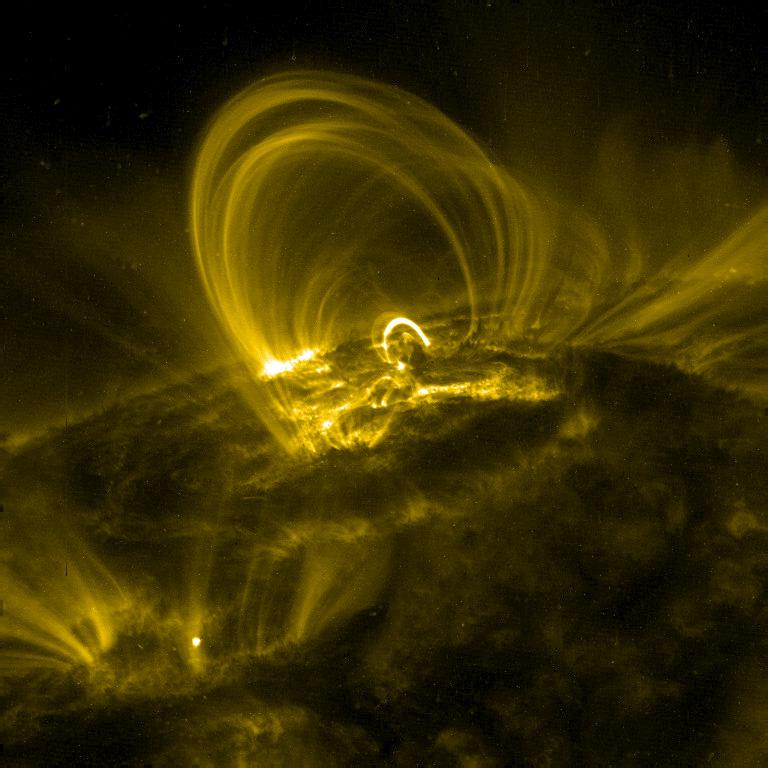
Solar flares and coronal mass ejections consist of fast-moving charged particles from the sun: largely protons and other atomic nuclei. Normally, the sun emits a constant stream of these particles, known as the solar wind. However, these space weather events — in the form of solar flares and coronal mass ejections — can not only greatly enhance the density of charged particles that get sent out from the Sun, but their speed and energy as well. They typically occur close to equatorial latitudes, which means they’re at risk of intercepting the Earth. The Sun makes a full rotation every 25 days at its equator, while Earth orbits the Sun every ~365 days. When a flare or ejection is aligned with Earth, our planet is at risk.
Given that we now have Sun-monitoring satellites and observatories, they’re our first line of defense: to alert us when a space weather event is potentially threatening to us. That occurs when a flare points directly at us, or when a coronal mass ejection appears “annular,” meaning that we only see a spherical halo of an event that’s potentially directed right at us.
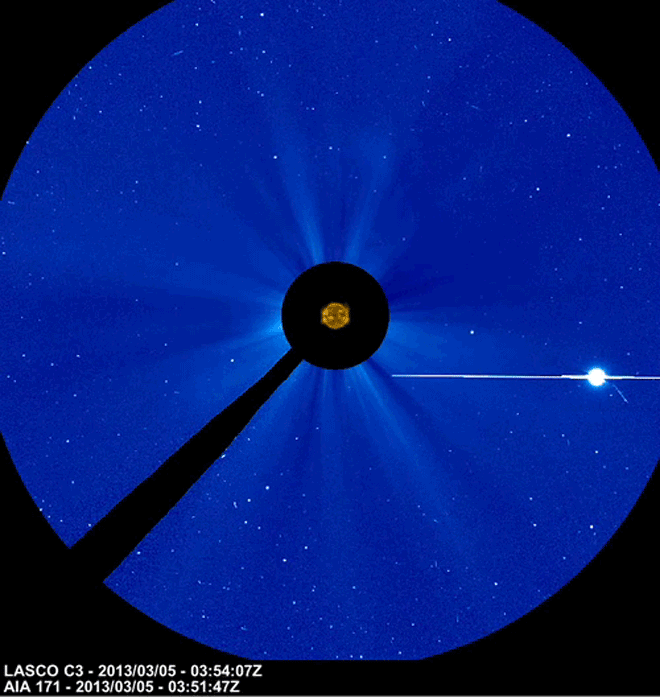
Most of the time that a solar flare or a coronal mass ejection gets launched, Earth is in the clear. Most of these events miss Earth; most of the ones that do hit Earth are relatively weak and slow-moving, incapable of causing any effects other than a mild auroral show; most of the strong ones that hit Earth still won’t cause any damage to our civilization. In fact, we’re only in trouble if three things all occur at once:
- The space weather events that occur need to have the proper magnetic alignment with respect to our own planet to penetrate our magnetosphere. If the alignment is off, Earth’s magnetic field will harmlessly deflect the majority of particles away, leaving the remainder to do nothing more than create a mostly harmless auroral display. This alignment occurs rarely, and can now be measured with the NSF’s Daniel K. Inouye Solar Telescope.
- Typical solar flares occur only at the Sun’s photosphere, but ones that interact with the solar corona — often connected by a solar prominence — can cause a coronal mass ejection. If a coronal mass ejection is directed right at Earth, and the particles are moving rapidly, that’s what puts Earth in the greatest amount of peril.
- There needs to be a large amount of electrical infrastructure in place, particularly large-area loops and coils of wire. Back in 1859, electricity was still relatively novel and rare; today, it’s a ubiquitous part of our global infrastructure. As our power grids become more interconnected and far-reaching, our infrastructure faces greater and greater threats from these space weather events.

It’s only since the advent of our modern, electrified, and electronics-reliant infrastructure, that solar flares and coronal mass ejections have begun to pose a danger to humanity. Biological organisms are unaffected by these particles and the induced magnetic field changes; the worst we’ll experience is a bright auroral display caused by charged particles getting funneled down onto our atmosphere. But today, with the massive amounts of electricity-based infrastructure that now covers our planet, the danger is very, very real.
The problem comes from having long wires, loops and coils of wires, transformers, and similar electric/electronic infrastructure that current flows through. Whenever current flows, it creates a magnetic field; whenever the magnetic field through a loop or coil (or around a wire) changes, it can similarly induce an electric current. That’s where the danger comes in: the space weather events strike Earth, impact and alter our planet’s magnetic field at its surface, which causes the magnetic field to change in this electric/electronic infrastructure, causing charge to flow and inducing an electric current. Importantly, this occurs even if:
- there’s no battery,
- no voltage source,
- and even if the electronic devices are unplugged entirely.

That’s what makes space weather so dangerous to us here on Earth: not that it poses a direct threat to humans, but that it can cause enormous amounts of electrical current to flow through the wires connecting our infrastructure. This can lead to:
- electrical shorts,
- fires,
- explosions,
- blackouts and power outages,
- a loss of communications infrastructure,
and many other damages that will result as downstream consequences of this disruption. Consumer electronics aren’t a major problem; if you knew a solar storm was coming and you unplugged everything in your home, most of your devices would be safe. The major issue is with the infrastructure set up for large-scale production and transmission of power; there will be uncontrollable surges that will knock out power stations and substations and pump far too much current into cities and buildings.
In 2013, when our infrastructure was nine years more primitive than it is today, a cutting-edge report considered what would happen solely to the North American power grid as a result of a Carrington-like event, were it to occur back then. Their conclusions is that, on the North American continent alone, the damage caused would come out to an estimated ~$2.6 trillion. Given the increase in ground-based and space-based infrastructure (we’ll get to the latter part in just a moment) and the fact that these events have global consequences, a modern Carrington-like event could become humanity’s first natural disaster with costs and consequences exceeding a 14-figure ($10 trillion) threshold.

The nightmare scenario would look like this.
- A rapid solar flare or coronal mass ejection would be emitted, and either we’d receive no forewarning, or we’d ignore whatever warning we did receive.
- The charged particles would arrive — not in 3 or 4 days, a typical travel-time — but in under 24 hours: evidence for an extremely energetic space weather event.
- They’d be maximally anti-aligned with Earth’s magnetic field, allowing them to rain down upon Earth, permeating our magnetosphere, and drastically changing our surface magnetic field.
- The aurorae would be super powerful, appearing globally, day-and-night, and across all latitudes.
- They would induce currents in our power grids, leading to tremendous power surges.
- This would blow out power stations and substations, cause strong power surges in commercial, residential, and industrial sectors, and cause large numbers of fires.
- Without power, most of these fires would rage uncontrollably; without our communications infrastructure, there would be no way to get help to those who need it.
- Many locales would be without power for weeks or months or longer, and transportation of people and goods in-and-out of cities would slow to a trickle or even halt.
- And because these power grids would need to be repaired or even replaced entirely, things like heating, cooling, and the delivery of food and clean water to people who need it would go unmet.
In a worst-case scenario, not only would this cause tens of trillions of dollars in property damage worldwide, but millions upon millions of people would freeze, starve, or die of dehydration in the aftermath of such a storm.

The atmosphere can protect us from the energetic particles emitted by the Sun down here on Earth’s surface, but our space-based infrastructure has no such protection. Satellites would all be knocked offline, and if they rely on artificial intelligence to avoid collisions — like the modern, unregulated constellation of Starlink satellites — then that will be knocked offline, too. If either too much time passes before they’re brought back online, or we simply get unlucky, not only will collisions occur, but cascades of collisions. In a worst-case scenario, low-Earth orbit could become littered with space junk, creating a catastrophic debris field that persists for millennia.
Additionally, the 1859 Carrington event wasn’t a unique, one-off event that will never happen again. On June 23, 2012, the sun emitted a solar flare that was just as energetic as 1859’s Carrington event. It occurred along the Sun’s equatorial plane, and we’re fortunate that the Sun was rotated in the wrong direction for it to come our way. If the flare had occurred with a 9 day time differential, it would have been a direct hit. In addition, a composite analysis of tree-ring data, ice core data, and the historical record indicates that in 774/775, in 993/994, and in ~660 BC, space weather events equal to or greater in magnitude than the Carrington event occurred. A little over 9000 years ago, an event 10-100 times as powerful occurred. It’s possible, perhaps even likely, that luck is the only reason we’ve avoided catastrophe so far.
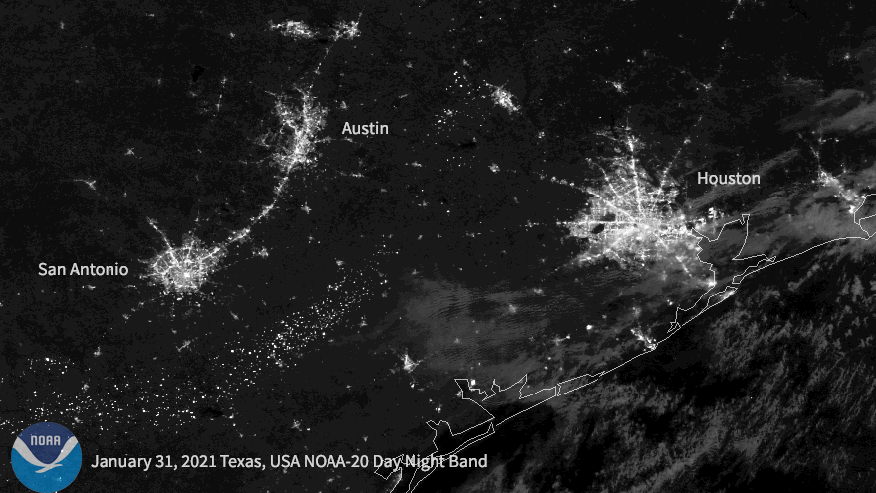
As far as mitigation strategies go, we’re only slightly better prepared today than we were nine years ago. We have insufficient grounding at most stations and substations to direct large induced currents into the ground instead of homes, businesses, and industrial buildings. We could order power companies to cut off the currents in their electrical grids — a gradual ramp-down requiring ~24 hours — which could reduce the risks and severities of fires, but that has never been attempted before. And we could even issue recommendations for how to cope in your own household, but no official recommendations presently exist.
Early detection is the first step, and we’re making great scientific strides on that front. However, until we’ve prepared our power grid, our energy distribution system, and citizens of the Earth to be ready for the inevitable, the “big one” will cost us dearly if it arrives anytime soon. Ironically, without the infrastructure we need, electric vehicles will largely be useless during this time; unless you have a generator or some large-scale battery bank handy, fossil fuels will be our only savior. The amount we’ll pay to repair our infrastructure will cost us what we’ve failed to spend in prevention many times over, for years and even decades to come, all because of our collective unwillingness to prepare.
Send in your Ask Ethan questions to startswithabang at gmail dot com!
